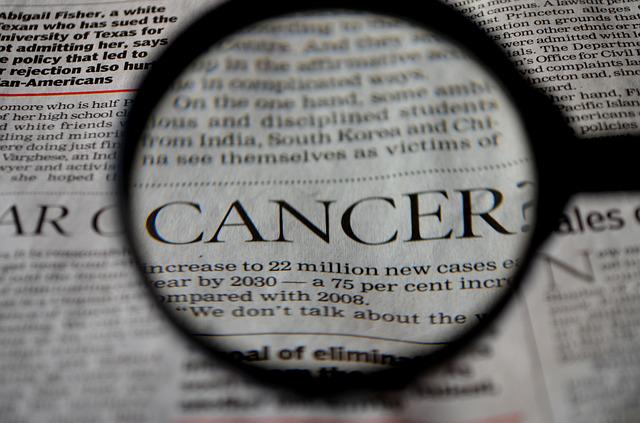In-Silico Study: Potential Inhibitor of Cyclin-Dependent Kinase 6 (CDK6) from Natural Plant Compounds for Melanoma Treatment

Downloads
Highlights:
1. Melanoma is the most aggressive and dangerous type of skin cancer.
2. Cyclin-dependent kinase 6 (CDK6) had a role in melanoma progression.
3. Chlorogenic acid, guattegaumerine, luteolin, and acronycine were potential natural compounds in plants as CDK6 inhibitors.
Abstract
Introduction: Melanoma is the most aggressive and dangerous type of skin cancer. It usually occurs in the skin because melanocytes originate from the neural crest cells that migrate. A previous study stated misregulation of cyclin-dependent kinase 6 (CDK6) had a role in melanoma progression. This study aimed to identify the potential natural compound targeting and modulating the CDK6.
Methods: This was an investigative study using in-silico docking analysis to search for compatible ligands and potential inhibitors to CDK6 protein. This study screened 46 natural compounds based on the drug-likeliness based on Lipinski's rules of five and used PyRx (AutoDock Vina) software for the initial screening. 10 compounds with the highest binding energy underwent docking simulation using Molecular Operating Environment (MOE) software.
Results: Chlorogenic acid, guattegaumerine, luteolin, and acronycine were potential natural compounds in plants as CDK6 inhibitors.
Conclusion: This study found that chlorogenic acid was the most potential to be an inhibitor of CDK6 compared to other compounds screened.
Davis LE, Shalin SC, Tackett AJ. Current State of Melanoma Diagnosis and Treatment. Cancer Biol Ther 2019; 20: 1366–1379.
Avram AM, Simionescu OD, Costache M, et al. Improving Melanoma Path Reports: the Importance of Histopathological Parameters in Diagnosis of Cutaneous Melanoma. Maedica (Buchar) 2015; 10: 226–230.
Domingues B, Lopes J, Soares P, et al. Melanoma Treatment in Review. ImmunoTargets Ther 2018; Volume 7: 35–49.
Huff LS, Chang CA, Thomas JF, et al. Defining an Acceptable Period of Time from Melanoma Biopsy to Excision. Dermatology Reports 2012; 4: 2.
Kollmann K, Briand C, Bellutti F, et al. The Interplay of CDK4 and CDK6 in Melanoma. Oncotarget 2019; 10: 1346–1359.
Nebenfuehr S, Kollmann K, Sexl V. The Role of CDK6 in Cancer. Int J Cancer 2020; 147: 2988–2995.
Garutti M, Targato G, Buriolla S, et al. CDK4/6 Inhibitors in Melanoma: A Comprehensive Review. Cells 2021; 10: 1334.
Anantharaju PG, Gowda PC, Vimalambike MG, et al. An Overview on the Role of Dietary Phenolics for the Treatment of Cancers. Nutr J 2016; 15: 99.
Agriculture USDO. Dr. Duke's Phytochemical and Ethnobotanical Databases. USDA, https://phytochem.nal.usda.gov/phytochem/search (2021).
Informayion NC for B. PubChem. National Library of Medicine, https: // pubchemdocs.ncbi.nlm.nih.gov/ about.
Swiss Institute of Bioinformatics. SwissADME. SIB, http://www.swissadme.ch/ (2022).
RSCB PDB. A Structural View of Biology. National Science Foundation, https://www.rcsb.org/.
Tian W, Chen C, Lei X, et al. CASTp 3.0: Computed Atlas of Surface Topography of Proteins. Nucleic Acids Res 2018; 46: W363–W367.
Kopustinskiene DM, Jakstas V, Savickas A, et al. Flavonoids as Anticancer Agents. Nutrients 2020; 12: 457.
Moreira C., Lima S., Esquibel M., et al. Solasodine Accumulation in Regenerated Plants of Solanum torvum Sw. Rev Bras Plantas Med 2010; 12: 73–79.
Lin Y, Shi R, Wang X, et al. Luteolin, a Flavonoid with Potential for Cancer Prevention and Therapy. Curr Cancer Drug Targets 2008; 8: 634–646.
Beck JR, Kwok R, Booher RN, et al. Synthesis of Acronycine. J Am Chem Soc 1968; 90: 4706–4710.
Kraus PF, Kutchan TM. Molecular Cloning and Heterologous Expression of a cDNA Encoding Berbamunine Synthase, a C--O Phenol-Coupling Cytochrome P450 from the Higher Plant Berberis Stolonifera. Proc Natl Acad Sci 1995; 92: 2071–2075.
Anand David A, Arulmoli R, Parasuraman S. Overviews of Biological Importance of Quercetin: A Bioactive Flavonoid. Pharmacogn Rev 2016; 10: 84.
Shankar GM, Antony J, Anto RJ. Quercetin and Tryptanthrin: Two Broad Spectrum Anticancer Agents for Future Chemotherapeutic Interventions: 43–72.
Hostetler GL, Ralston RA, Schwartz SJ. Flavones: Food Sources, Bioavailability, Metabolism, and Bioactivity. Adv Nutr An Int Rev J 2017; 8: 423–435.
Moreira EA, Pilon AC, Andrade LE, et al. New Perspectives on Chlorogenic Acid Accumulation in Harvested Leaf Tissue: Impact on Traditional Medicine Preparations. ACS Omega 2018; 3: 18380–18386.
Costa de Oliveira R, Soares Pontes G, Kostyuk A, et al. Anticancer and Immunomodulatory Activities of a Novel Water-Soluble Derivative of Ellipticine. Molecules 2020; 25: 2130.
Stiborová M, ÄŒerná V, Moserová M, et al. The Anticancer Drug Ellipticine Activated with Cytochrome P450 Mediates DNA Damage Determining Its Pharmacological Efficiencies: Studies with Rats, Hepatic Cytochrome P450 Reductase Null (HRNTM) Mice and Pure Enzymes. Int J Mol Sci 2014; 16: 284–306.
Zhang J, Zhang L, Xu Y, et al. Deciphering the Binding Behavior of Flavonoids to the Cyclin Dependent Kinase 6/Cyclin D Complex. PLoS One 2018; 13: e0196651.
Copyright (c) 2022 Putri Aliya Ahadini, Adhyatma Ismu Reihan, Muhamad Bagus Wira Utama, Siti Khaerunnisa, Fadilah Fadilah

This work is licensed under a Creative Commons Attribution-ShareAlike 4.0 International License.
1. The journal allows the author to hold the copyright of the article without restrictions.
2. The journal allows the author(s) to retain publishing rights without restrictions
3. The formal legal aspect of journal publication accessibility refers to Creative Commons Atribution-Share Alike 4.0 (CC BY-SA).




























